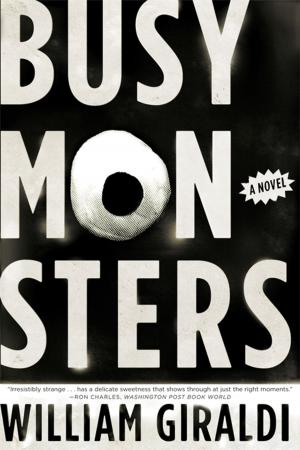Bellow's People: How Saul Bellow Made Life Into Art
Fiction & Literature, Literary Theory & Criticism, Jewish, American, Biography & Memoir, Literary| Author: | David Mikics | ISBN: | 9780393246889 |
| Publisher: | W. W. Norton & Company | Publication: | May 24, 2016 |
| Imprint: | W. W. Norton & Company | Language: | English |
| Author: | David Mikics |
| ISBN: | 9780393246889 |
| Publisher: | W. W. Norton & Company |
| Publication: | May 24, 2016 |
| Imprint: | W. W. Norton & Company |
| Language: | English |
A leading literary critic’s innovative study of how the Nobel Prize–winning author turned life into art.
Saul Bellow was the most lauded American writer of the twentieth century—the winner of the Nobel Prize in Literature and the Pulitzer Prize in Fiction, and the only novelist to be awarded the National Book Award in Fiction three times. Preeminently a novelist of personality in all its wrinkles, its glories and shortcomings, Bellow filled his work with vibrant, garrulous, particular people—people who are somehow exceptionally alive on the page.
In Bellow’s People, literary historian and critic David Mikics explores Bellow’s life and work through the real-life relationships and friendships that Bellow transmuted into the genius of his art. Mikics covers ten of the extraordinary people who mattered most to Bellow, such as his irascible older brother, Morrie, a key inspiration for The Adventures of Augie March; the writer Delmore Schwartz and the philosopher Allan Bloom, who were the originals for the protagonists of Humboldt’s Gift and Ravelstein; the novelist Ralph Ellison, with whom he shared a house every summer in the late 1950s, when Ellison was coming off the mammoth success of Invisible Man and Bellow was trying to write Herzog; and Bellow’s wife, Sondra Tschacbasov, and his best friend, Jack Ludwig, whose love affair Bellow fictionalized in Herzog.
A perfect introduction to Bellow’s life and work, Bellow’s People is an incisive critical study of the novelist and a memorable account of a vibrant and tempestuous circle of midcentury American intellectuals.
A leading literary critic’s innovative study of how the Nobel Prize–winning author turned life into art.
Saul Bellow was the most lauded American writer of the twentieth century—the winner of the Nobel Prize in Literature and the Pulitzer Prize in Fiction, and the only novelist to be awarded the National Book Award in Fiction three times. Preeminently a novelist of personality in all its wrinkles, its glories and shortcomings, Bellow filled his work with vibrant, garrulous, particular people—people who are somehow exceptionally alive on the page.
In Bellow’s People, literary historian and critic David Mikics explores Bellow’s life and work through the real-life relationships and friendships that Bellow transmuted into the genius of his art. Mikics covers ten of the extraordinary people who mattered most to Bellow, such as his irascible older brother, Morrie, a key inspiration for The Adventures of Augie March; the writer Delmore Schwartz and the philosopher Allan Bloom, who were the originals for the protagonists of Humboldt’s Gift and Ravelstein; the novelist Ralph Ellison, with whom he shared a house every summer in the late 1950s, when Ellison was coming off the mammoth success of Invisible Man and Bellow was trying to write Herzog; and Bellow’s wife, Sondra Tschacbasov, and his best friend, Jack Ludwig, whose love affair Bellow fictionalized in Herzog.
A perfect introduction to Bellow’s life and work, Bellow’s People is an incisive critical study of the novelist and a memorable account of a vibrant and tempestuous circle of midcentury American intellectuals.















